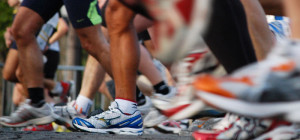 Sports and injuries almost go hand in hand. Whether you are doing a light exercise during warm up or kicking a ball to the goal post, there’s always a slight chance here and there for you to get injured somewhere or somehow.
Sports and injuries almost go hand in hand. Whether you are doing a light exercise during warm up or kicking a ball to the goal post, there’s always a slight chance here and there for you to get injured somewhere or somehow.
Such injuries can happen due to any reason starting from problems related to the pitch to problems related to your technique and everything between. Here’s a list of 10 of the most frequent injuries that happen in outdoor sports. Take a peek.
- Hip Flexor Strain
Your hip flexor’s a cluster of muscles that helps in upward movements of your knee or leg. A sudden injury occurs when these cluster of muscles are stretched too much. The injury can also occur as a result of torn muscles.
Hip flexor strains usually occur from having stiff muscles as a result of no warm up, an accidental fall or from weak muscles.
Symptoms: Spasms, pain, swelling and bruising.
Basic treatment: A minor injury related to the hip flexor muscles can be treated at home with ample rest, ice accompanied with apt pain medication.
- ACL (Anterior Cruciate ligament) tear
The ACL connects your leg bone to your knee. An ACL tear can occur when you stop suddenly and change direction almost immediately within a fraction of a second. Or it can also occur as a result of a hard impact to a side of the knee.
Symptoms: Instability, bruising, limping, unbearable pain during standing, swelling.
Basic treatment: ACL tear’s considered one of the most severe sports injuries. You must see a doctor in case you encounter this injury on field. And don’t try to move the injured leg too much to get off the field. Ask your team to arrange for a spine board to get you off safely for further treatments. You can use ice packs to alleviate the swelling in the meantime.
- Concussion
Concussion’s a brain injury that occurs when something powerful hits the head without prior notice. Players who commonly participate in contact sports such as football/soccer, boxing, hockey, wrestling etc. are at risk of getting concussions for any reason whatsoever. Skiers and gymnasts can also be at risk.
Symptoms: Nausea, lack in concentration, loss of balance, amnesia, dizziness, headaches etc.
Basic treatment: Headaches occurring due to concussion can be treated with acetaminophen. Proper rest needs to be taken to alleviate the symptoms at the same time. Consultation with a medical practitioner is a must if the concussion’s deemed serious.
- Groin pull
Muscles in our groin are present in the form of a fan. These muscles help to pull our legs together. Sports where sidewise movement are too important (such as hockey, football/soccer, baseball etc) have high risks of groin pulls.
Symptoms: Distinct bruising on the insides of the thigh accompanied with swelling.
Basic treatment: Groin pulls can be treated with compression, ice and ample rest. You must see a doctor is there’s significant swelling around the injured area.
- Shin splits
These injuries can easily be recognized by a sharp pain down the front of your leg (resembles an electric shock).
Shin splits happen commonly to sprinters but it can also happen to players who have increased their training regime too quickly. This injury can also occur as a result of a stress fracture on a specific bone.
Symptoms: Swelling, Tenderness, Sharp pain like electric shock.
Basic treatment: Proper rest is enough to alleviate the pain. If the pain refuses to go away, see a doctor as soon as possible and make sure that there’s no occurrence of any stress fracture. Shin splints that are minor in nature can be treated with ice packs, ample rest and OTC (over the counter) pain medication.
Stretching, wearing appropriate shoes and knowing what your limits are can help to prevent shin splits.
- Hamstring Strain
Hamstring injury usually happens when a player overuses or overstretches the muscles that make up the hamstring. Pain’s caused by tendons and muscle tears.
Lack of warm ups accompanied with lack of flexibility may result in hamstring injuries.
Symptoms: Bruising, severe pain, tenderness, swelling.
Basic treatment: Hamstring injuries don’t heal in a jiffy. It takes around 6 to 12 months for complete recovery. Ample rest’s required for complete treatment. Your physio can plan your rehab accordingly.
Well that brings us to the end of this article. It’s time to sign off for now. Hope you had a good read.







